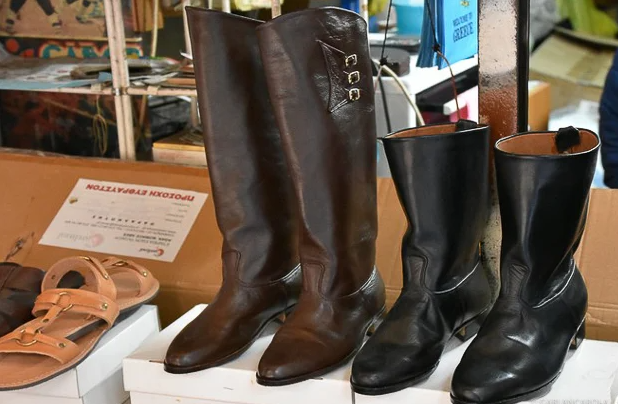Crete, the largest of the Greek islands, is renowned for its rich cultural heritage and artisanal traditions. Among these, leather craftsmanship holds a special place, reflecting the island’s history, resilience, and connection to nature. Traditional Cretan leather craftsmanship is not just an occupation; it is an art form that has been perfected over centuries. This craft embodies the island’s spirit, blending practicality with beauty and preserving a way of life that is deeply rooted in the past yet continues to thrive today.
The Historical Roots of Cretan Leather Craftsmanship
Leatherworking in Crete dates back to ancient times, with archaeological evidence showing that the Minoans, who inhabited the island from approximately 3000 to 1450 BCE, used leather for various purposes. The craft continued to evolve through the Classical, Byzantine, Venetian, and Ottoman periods, each leaving its mark on the techniques and styles used by Cretan leatherworkers.
Ancient and Byzantine Influences
- Minoan Civilization: The Minoans were among the earliest to use leather, crafting items such as sandals, belts, and garments. Their skills in tanning and leatherworking were advanced for their time, setting a foundation for future generations.
- Byzantine Era: During the Byzantine period, leatherwork flourished with the production of more intricate and ornate items. The influence of the Byzantine Empire introduced new techniques and designs, enriching the Cretan tradition.
Venetian and Ottoman Contributions
- Venetian Period: Under Venetian rule (1204-1669), leatherworking in Crete saw significant advancements. The Venetians brought with them refined techniques and a taste for elaborate designs, which Cretan artisans skillfully incorporated into their own work.
- Ottoman Era: The Ottoman period (1669-1898) further diversified Cretan leather craftsmanship. Ottoman influences introduced new styles and patterns, particularly in the production of footwear and decorative items.
The Crafting Process: From Hide to Finished Product
The process of creating traditional Cretan leather goods involves several meticulous steps, from selecting the right hides to finishing the final product. Each step requires skill, patience, and a deep understanding of the materials.
Tanning the Leather
- Selection of Hides: The quality of leather begins with the selection of hides. Cretan leatherworkers typically use hides from goats, sheep, and cattle, chosen for their durability and texture.
- Tanning Process: Traditional tanning methods involve natural materials such as tree bark and plant extracts. This process can take several weeks and results in leather that is both supple and long-lasting.
Crafting the Leather
- Cutting and Shaping: Once the leather is tanned, it is cut and shaped according to the desired product. This step requires precision and expertise to ensure that the pieces fit together perfectly.
- Stitching and Assembling: The pieces are then stitched together by hand, using strong, durable threads. This meticulous work is often done with a simple awl and needle, maintaining the authenticity of traditional methods.
Decorative Techniques
- Tooling and Embossing: Decorative techniques such as tooling and embossing add unique patterns and textures to the leather. These designs often include motifs inspired by nature, mythology, and Cretan history.
- Dyeing and Finishing: Natural dyes are used to color the leather, providing a rich, authentic appearance. The final finishing touches, such as polishing and adding hardware, complete the product.
Iconic Cretan Leather Goods
Cretan leather artisans produce a variety of items, each with its own distinctive style and purpose. Some of the most iconic products include the Cretan boots, known as “stivania,” traditional sandals, and intricate belts and bags.
Stivania (Cretan Boots)
- Durability and Comfort: Stivania are renowned for their durability and comfort, designed to withstand the rugged terrain of Crete. They are typically made from thick, sturdy leather and feature high, protective sides.
- Cultural Significance: These boots are not only practical but also hold cultural significance, often worn during traditional dances and celebrations.
Sandals and Footwear
- Handcrafted Quality: Cretan sandals are famous for their handcrafted quality and timeless designs. Each pair is made to fit the wearer’s foot perfectly, providing comfort and style.
- Versatile Designs: The designs range from simple, everyday wear to more elaborate styles adorned with decorative elements, reflecting both function and artistry.
Belts and Bags
- Functional and Decorative: Cretan leather belts and bags combine functionality with decorative craftsmanship. They are often embellished with intricate patterns and designs, showcasing the artisan’s skill.
- Traditional Techniques: These items are crafted using traditional techniques passed down through generations, ensuring that each piece is unique and of the highest quality.
Preservation and Modern Adaptation
While traditional Cretan leather craftsmanship remains rooted in ancient techniques, modern artisans are finding ways to adapt and innovate, ensuring that the craft continues to thrive in a contemporary context.
Education and Training
- Apprenticeships: Many young Cretans learn the craft through apprenticeships, working alongside experienced artisans to master the techniques and skills required.
- Workshops and Schools: Workshops and specialized schools offer courses in traditional leatherworking, promoting the craft and encouraging new generations to take up the art.
Contemporary Designs
- Fusion of Old and New: Modern Cretan leatherworkers often fuse traditional techniques with contemporary designs, creating products that appeal to both locals and tourists.
- Sustainable Practices: There is a growing emphasis on sustainable practices, using eco-friendly materials and methods to produce leather goods that are both beautiful and environmentally responsible.
Conclusion
Traditional Cretan leather craftsmanship is a vibrant and enduring art form that reflects the island’s rich cultural heritage. From the selection of the finest hides to the meticulous crafting and decorative processes, each step is a testament to the skill and dedication of Cretan artisans. While rooted in ancient traditions, this craft continues to evolve, adapting to modern demands while preserving its unique character and quality. Exploring Cretan leather craftsmanship offers a deeper appreciation for the island’s history, culture, and the timeless artistry that continues to define its identity.


